Do you even enduro bro? The most inclusive type of racing has taken over the bike world and is welcoming riders of all levels to get involved. If you are planning your first race, here are 10 things you need to know.
Choosing the right enduro race.
Enduro must be one of the only disciplines of any sport where you can just pitch up with a bike and ride against professionals. Amazing as that it is, it’s probably best not to try an Enduro World Series for your first race unless you like hearing “out of the way” in many different languages! Riding as a first timer in the EWS would probably be less catastrophic to your health than entering the world boxing champs as a newbie but it isn’t going to do your confidence any good at all. Reel it in a bit! Look local for your first event and find something that compliments your type of riding. Are you a downhiller at heart? Look for an event that is happening in an area that you know has DH type trails? More a pedaller? Look for an event in a flatter area. If the riding compliments you, you’re going to enjoy it more and you’ll be hooked on going against the clock.
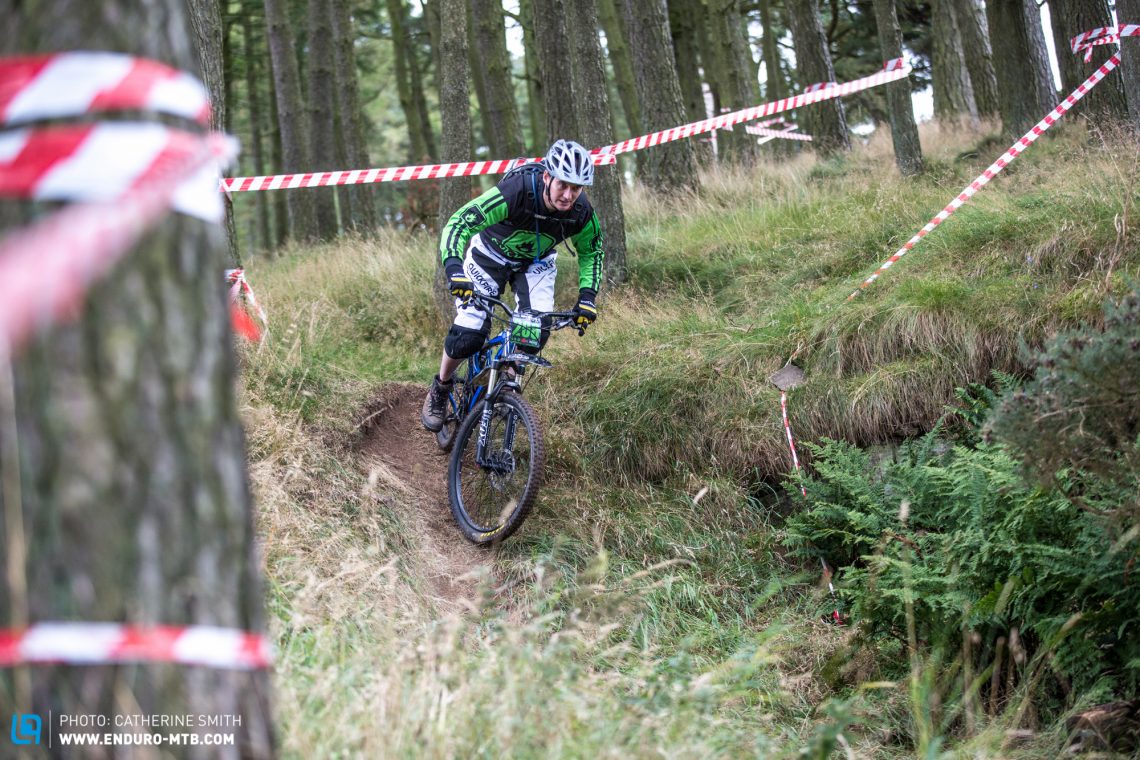
What bike will I need for enduro racing?
With so many bikes to choose from, there has never been a better time to be a rider. There are very few really bad bikes these days and a lot of it comes down to finding the bike that works for you. But there are a few guidelines to follow! Choose something you can pedal all day, if you’re lugging around a massive downhill beast, huge amounts of suspension will not help you on the descents if you are exhausted from pedalling it up the hills. Hardtails are great, and if that’s all you have, then go for it, but a modern 120-160mm travel bike will make your day a lot more fun. Although you’ll see some hardy souls racing on hardtails full time, that’s a lifestyle choice they’ve made, like having a beard or wearing Cuban heels, it defines them as a person and is admirable but not necessarily everyone’s cup of tea. Check out our bike review overview page for more information on what bike to get.
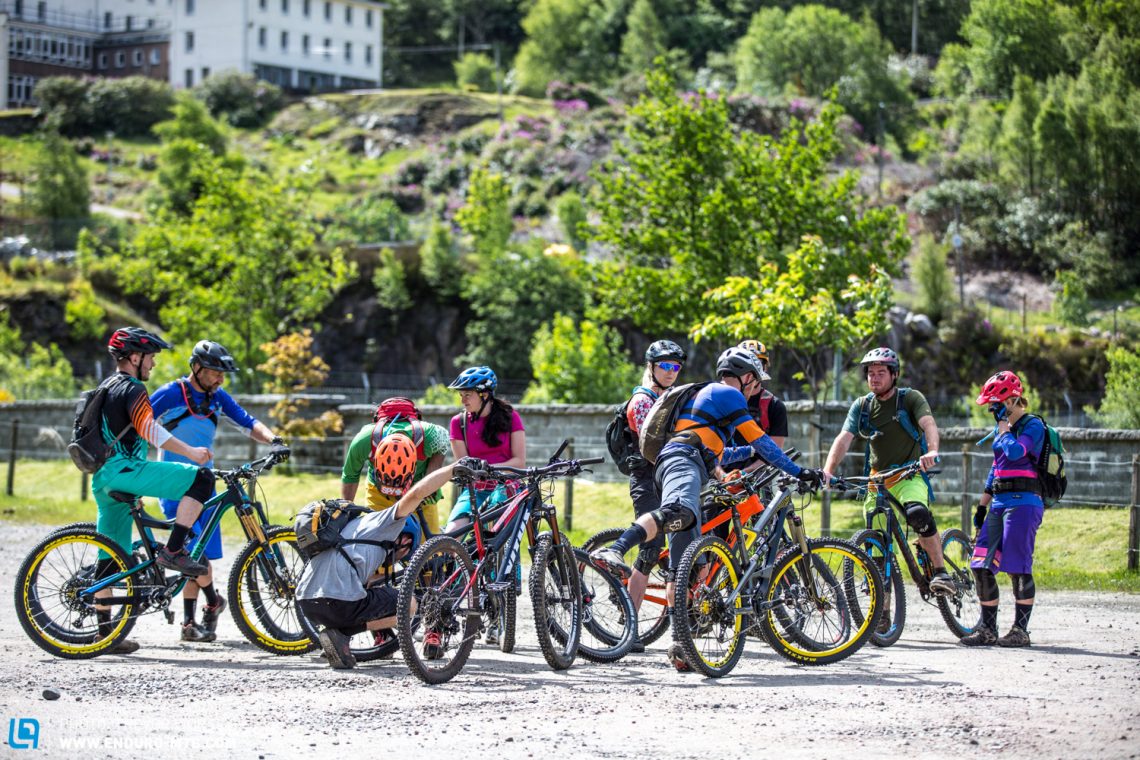
Do I need a dropper seat post for enduro racing?
A few years ago, dropper posts were met with a healthy disdain. What other crap will the mountain bike industry think of next? Do they think we’re gullible? Now most riders would engage in hand to hand conflict if you tried to take it away from them. Although a dropper isn’t essential you’ll wish you had one when you find the organisers have slipped a sneaky two-minute climb into the middle of a race stage. Most dropper posts these days will get the job done but if you’re in the market for a new one, you should get the best dropper seat post you can buy.

What helmet do I need for enduro racing?
Most, if not all, UK events don’t require you to wear a full face helmet but if you’re thinking about riding in continental Europe, give the race rules a read. All events will require you to wear a helmet at all times (that’s climbing too) so your choice of helmet might depend on the type of event, the temperature and whether you’re the kind of rider that knows they run a high risk of face-butting a tree (although obviously nobody is immune). There is no shame in wearing a full face helmet and if you don’t mind wearing it on the climbs as well they’re a great choice. A lot of riders are turning to the new generation of lighter “enduro” helmets which offer full-face protection with more ventilation, like the Met Parachute, or to helmets with removable chin guards like the Uvex Jakkyl Hde. Light, airy and enduro-specific bro.
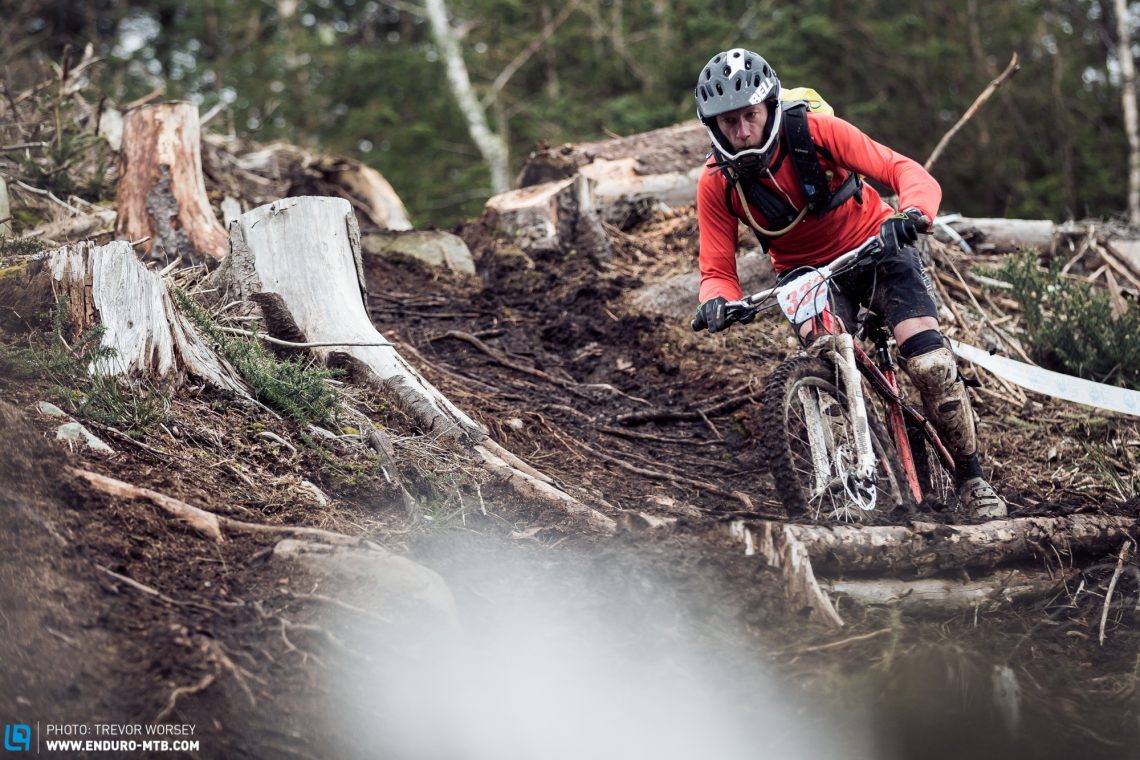
You will need to watch the time?
Nothing fancy required, just a good old basic timepiece. Some enduro races will offer ‘open timing’ where all you need to do is be back before the final cut off to avoid penalisation but some races require a bit more awareness of time. Stage opening and closing times, stage start times and keeping an eye on the gap between you and the rider in front are easier to monitor with a watch than a phone in your pocket. If you’re riding one of the big races that require riders to start each stage at precise times, you also might want to synchronise your watch with the clocks in the start area.
How do I carry all my kit around at a race?
There are a few items that you’ll want/need to have with you on a big day out in the saddle. At the very least you’ll want your phone (normally an event specified necessity), an inner tube, pump/CO2 and a multitool. Depending on the forecast and where you are, a jacket might be a welcome addition. So how are you going to carry it? Backpacks are still popular and some have the added benefits of back protection and hydration systems. If you want to be free and unencumbered there are other options – the Alpinestar Paragon protective shirt, lets you hide all your goodies away under your race shirt in pockets – it’s all a little roadie but our lycra-clad cousins have been dealing with big days out with no backpack for, like, forever!
Now, no sniggering, but a cost effective and really very effective option is the good ol’ 90’s revival bum bag/fanny pack. If it makes you feel better you can give it a cooler name, “multipurpose utility race optimisation pack” maybe, or the actually cool and in existence Source Hipster Hydration Belt.

Will I get a sick racing photo for my Facebook profile?
You’ll see a lot of photographers out in the woods, loitering on corners, trying to get a shot of you at maximum rad! In the UK, you can often find these uploaded and ready for purchase at rootsandrain.com but in some smaller races and those in continental Europe, actually buying the photos can be a challenge. Ask the marshals or race staff and they might be able to tell you who to look out for.
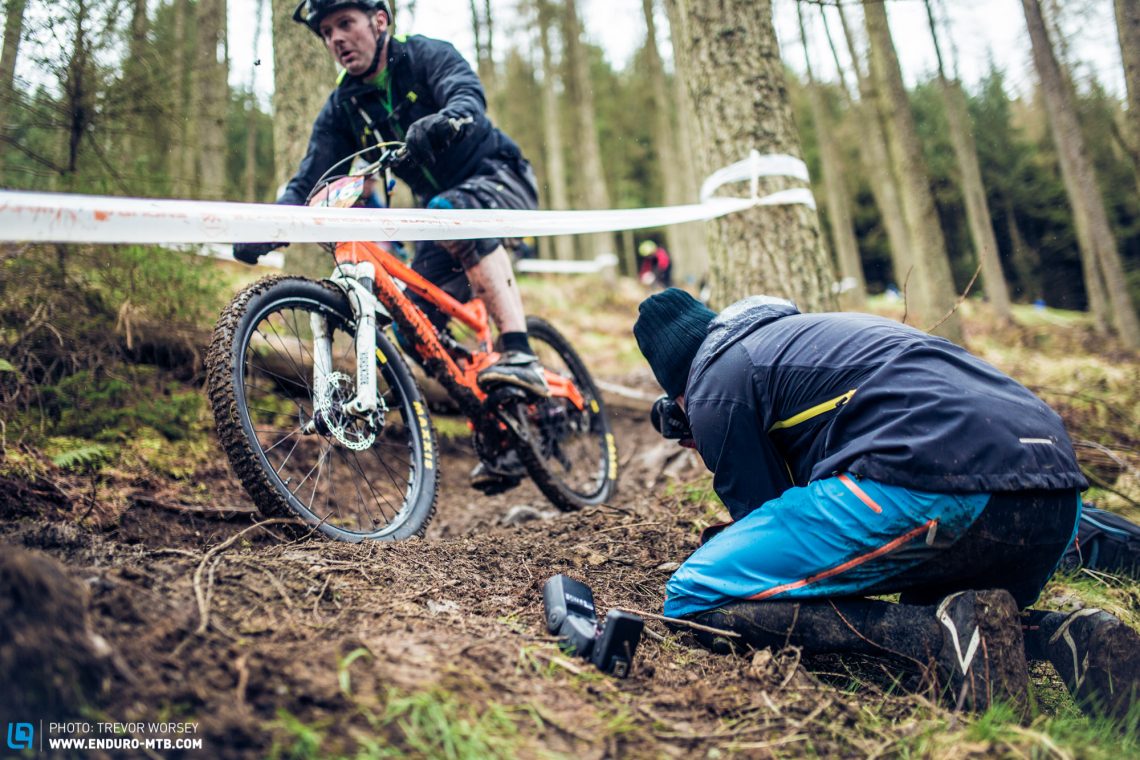
What tyres do I need for enduro racing?
You can get by on whatever tyres are fitted to your bike, but don’t be afraid to change your tyres to suit the conditions if your old faithfuls are not the right rubber for the day. You’ll be cursing your mud spikes on a 400-metre climb if it’s 30 degrees and sunny so give it a little thought the night before. You can change your tyres between practice and race day so if conditions change don’t be afraid to change them again. Don’t go for anything flimsy, a ripped tyre wall will end your day very abruptly. Check out our tire group test in the current ENDURO issue 022.
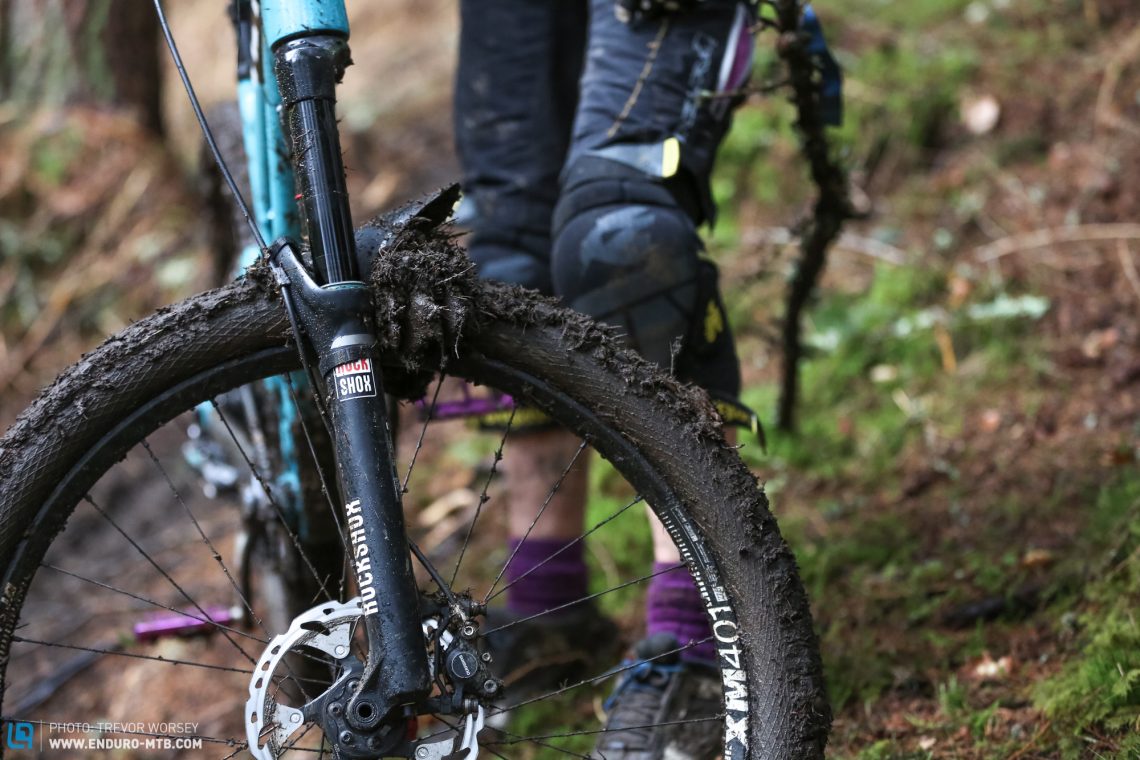
Keep those peepers safe
Riding in your first enduro might be an emotional experience but you don’t want to end your day with bleary red eyes – it doesn’t look good in podium photos. Whether you get sun dried dusty trails or rain-soaked slick-fests, you’ll need to keep whatever is flying upwards out of your eyes. We have all ridden trails with one grit-filled eye closed, the resulting lack of depth perception is terrifying and can result in serious eye issues later in life. Glasses have saved many a ride and are a cheap addition to your riding wardrobe. If you want even more protection, go full enduro and get yourself some goggles!

Will I get overtaken?
If the stages are short then getting overtaken is unlikely, but if they are long you may encounter other riders, but don’t worry, there is a system! When you race you’ll most likely be leaving the top timing station at 20 or 30-second gaps, and on long stages, you’re quite likely to encounter traffic or to become traffic. Overtaking or being overtaken is very straightforward and whatever the level of race, there’s no excuse for getting frustrated. If you want to get past someone, let them know you’re there by shouting “Rider”, then pass with communication when it’s safe. They might be slower than you but they’re probably involved in their own personal race against a group of buddies or for a different podium, so let them find a safe spot. Look for somewhere safe to pass and let them know what side you’re about to pass on – surprised people can react unexpectedly. If you are being overtaken, simply pull over to a safe area as soon as it’s safe then get back on the pedals once the rider has passed – don’t be a rolling road block.
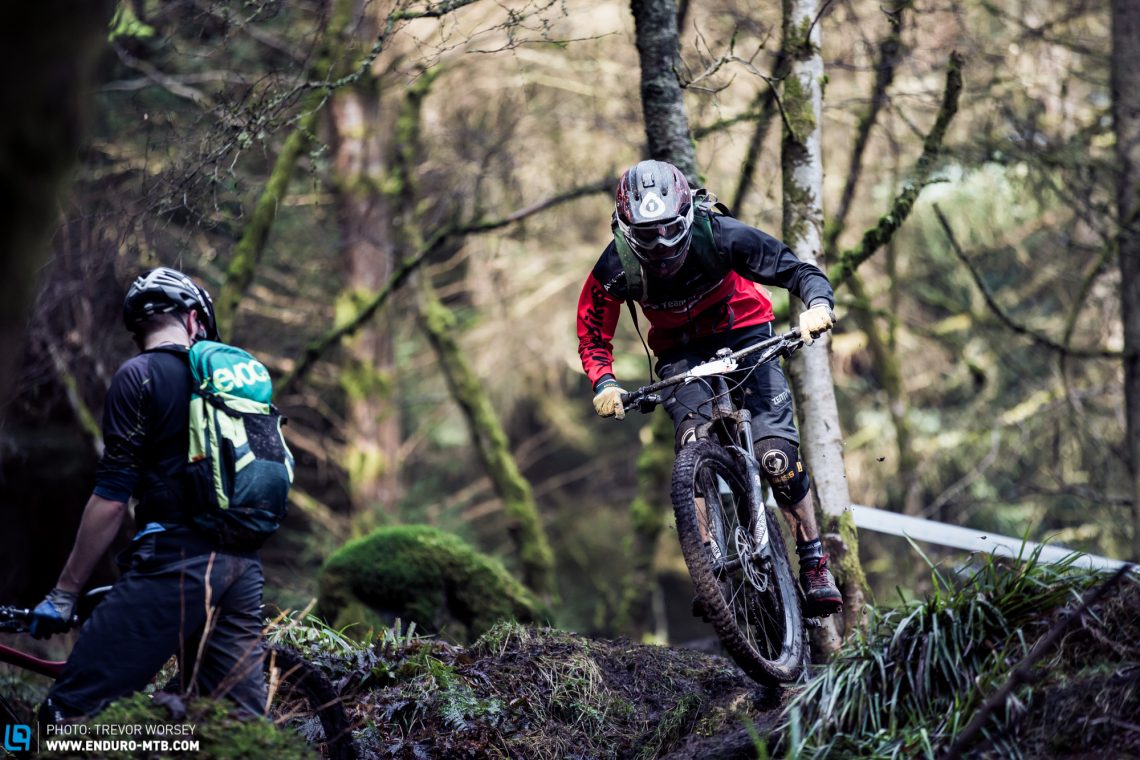
So that’s it. Have a look around and find an event that’s close to you, even on your home trails and give it a go! You will be sure to have a lot more fun than you think, see you out there!
Not sure where to look for events? You can find events in you are by looking at our Enduro Race Map.
Did you enjoy this article? If so, we would be stoked if you decide to support us with a monthly contribution. By becoming a supporter of ENDURO, you will help secure a sustainable future for high-quality mountain bike journalism. Click here to learn more.
Words: Photos: Trevor Worsey









